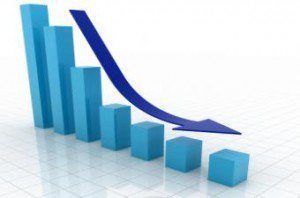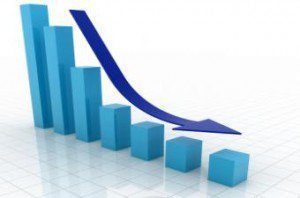 The rate of defaults has hit its lowest point in five months, according to the Consumer Credit Default Indices released by S&P Dow Jones Indices [1] and Experian [2] on Friday. The composite rate of all loan defaults dropped four basis points from April to May, declining to 0.86 percent, while the first mortgage default rate fell five basis points, hitting 0.64 percent for the month.
The rate of defaults has hit its lowest point in five months, according to the Consumer Credit Default Indices released by S&P Dow Jones Indices [1] and Experian [2] on Friday. The composite rate of all loan defaults dropped four basis points from April to May, declining to 0.86 percent, while the first mortgage default rate fell five basis points, hitting 0.64 percent for the month.
Default rates fell in four of the five major cities monitored by the Indices, too. In New York, the default rate was down nine basis points over the month—the largest decrease among all five cities. At No. 2 was Los Angeles, with a drop of three basis points in May, and Dallas came in at No. 3, experiencing a decline of two basis points. Miami’s rate dropped one basis point, while Chicago was the only city where default rates rose. Defaults jumped three basis points from April to May.
According to David M. Blitzer, Managing Director and Chairman of the Index Committee at S&P Dow Jones Indices, default rates on mortgages have now dipped below their pre-recession point.
“The default rate on first mortgage remains at 1 percent—lower than the pre-crisis period,” Blitzer said. "Rising home prices and increases in the equity mortgage borrowers have in their home are helping lower default rates."
But while overall default rates and the default rate of mortgages are on the downslope, defaults on bank cards are actually up. May’s bank card default rate of 3.53 percent hit a four-year high.
“Easy come, easy go: bank cards where borrowing money requires simply swiping a credit card are experiencing rising defaults, while defaults on other kinds of consumer credit which depend on paperwork are flat or down,” Blitzer said. “Default rates on bank cards are at the highest level since May 2013, four years ago. In the past, default rates began to climb around the same time the growth of bank card credit outstanding began to slow. The year-over-year growth of bank card credit outstanding peaked at 6.8 percent last November and was at 5.7 percent in April, the latest figure available. Bank card defaults rose from 2.81 percent in November to 3.35 percent in April, and up to 3.53 percent in May.”
Another factor in the differing default rates between products? According to Blitzer, it’s interest rates.
“One factor in the difference between rising bank card defaults and stable defaults on mortgages and autos may be the difference in interest rates: about 4 percent on mortgages and 4.4 percent on auto loans, compared to 12 percent to 18 percent on bank card loans.”
